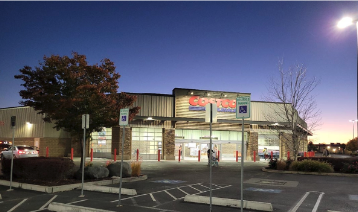An analysis of effective content strategies for brands on leading ecommerce websites.
By Emily Baynard, Mars UnitedSM Commerce
To help brands better understand the key content opportunities available on leading ecommerce websites, Mars UnitedSM Commerce last year began sharing the Digital Shelf Report, a cross-retailer comparison guide.
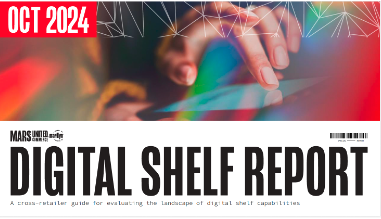 Included in the report is an assessment of six Advanced Content opportunities that can amplify the discoverability, shoppability, and convertibility of products sold on the retailers’ digital platforms. The following article examines two of those opportunities: Enhanced and Advanced Brand Stores, emerging capabilities that currently are only fully supported by two of the 11 ecommerce websites assessed in the Digital Shelf Report.
Included in the report is an assessment of six Advanced Content opportunities that can amplify the discoverability, shoppability, and convertibility of products sold on the retailers’ digital platforms. The following article examines two of those opportunities: Enhanced and Advanced Brand Stores, emerging capabilities that currently are only fully supported by two of the 11 ecommerce websites assessed in the Digital Shelf Report.
There was a lot of activity related to Brand Stores in 2024 as retailer websites began to expand and improve the content opportunities available to brand partners. Nearly all the 11 retailers tracked in the report allow brands to build what Mars United considers to be a “Basic” Brand Store that presents the broader portfolio rather than a single product, either through a self-service platform or a managed service. (DoorDash and Shipt are the only exceptions.)
But only five retailers have improved these basic stores by letting brands include more engaging types of content on their pages to create what we define as “Enhanced” Brand Stores: a single landing page that can carry interactive content modules such as unique image and text layouts, rich media, and product comparison charts. Amazon and Walmart are currently the only retailers that fully support Enhanced Brand Stores, although Target, Best Buy, and Gopuff offer managed-service options and Instacart is testing capabilities.
“Advanced” Brand Stores take the concept one step further by letting brands create multi-page storefronts. Amazon is currently the only retailer that fully supports Advanced Brand Stores; Best Buy and Walmart are offering them through managed service, and Instacart is testing here as well.
The following article looks at recent Brand Store capability updates at Amazon, Gopuff, and Walmart.
Amazon
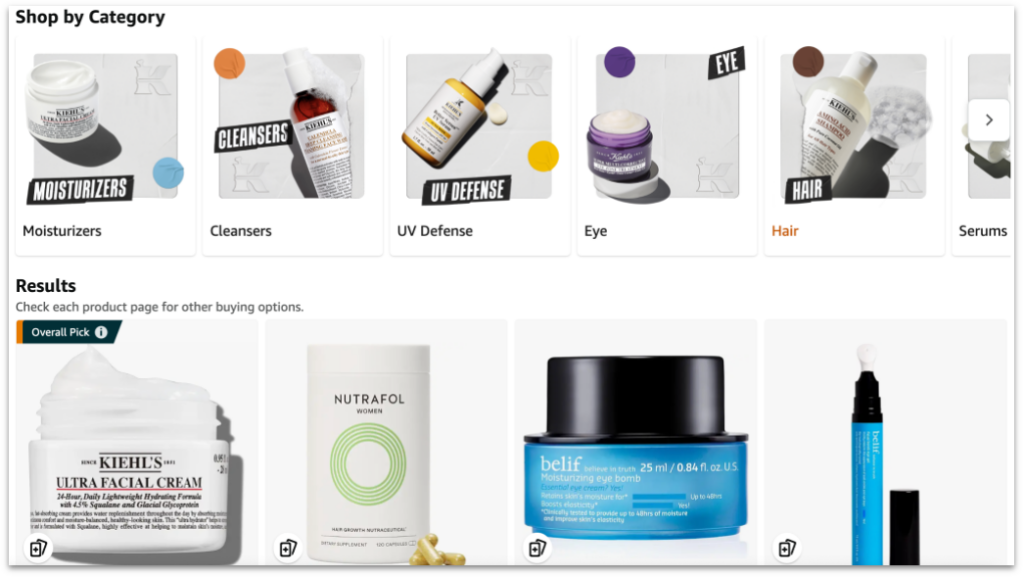 Direct-to-consumer (DTC) brands can now operate their own storefronts on Amazon.com, as in the examples below from Kiehl’s and Shopbop.
Direct-to-consumer (DTC) brands can now operate their own storefronts on Amazon.com, as in the examples below from Kiehl’s and Shopbop.
When a brand has a DTC storefront, the search experience is slightly different for shoppers on Amazon. When using the search bar to find products in a category where Kiehl’s plays or searching for “Kiehl’s”-related terms, shoppers see relevant categories from the Kiehl’s Brand Store at the top of search results (see image above) instead of the typical list of individual product results.
This is advantageous for the brand because those categories link directly to the Brand Store for a more focused shopping experience with upsell opportunities — and it’s a better experience for shoppers because they’re more likely to find what they want in less time, with fewer clicks.
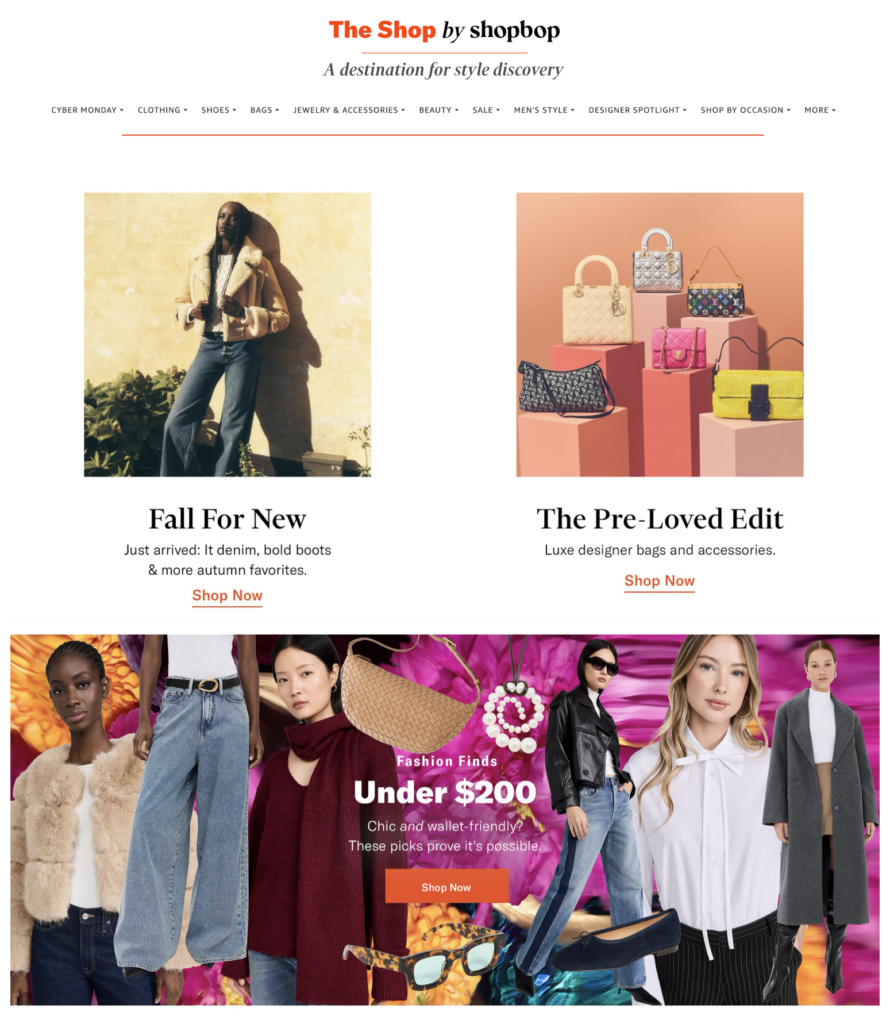 The Shop by Shopbop on Amazon is another interesting example, especially if you are targeting Gen Z. There is some very interesting visual content on this storefront, including editorial-style images and copy, that reflects a trend toward incorporating aspects of social media to better engage younger shoppers. It’s one example of the many ways Amazon is making the shopping experience more “social,” which also includes incorporating creator content, live shopping, and user-uploaded review videos on product detail pages (PDPs). Amazon is even extending its marketplace further by letting Prime members link their account to Shopbop’s website and use their benefits when making purchases there (see image at left).
The Shop by Shopbop on Amazon is another interesting example, especially if you are targeting Gen Z. There is some very interesting visual content on this storefront, including editorial-style images and copy, that reflects a trend toward incorporating aspects of social media to better engage younger shoppers. It’s one example of the many ways Amazon is making the shopping experience more “social,” which also includes incorporating creator content, live shopping, and user-uploaded review videos on product detail pages (PDPs). Amazon is even extending its marketplace further by letting Prime members link their account to Shopbop’s website and use their benefits when making purchases there (see image at left).
For brands in the food and beverage space, Amazon recently made recipe modules available on Brand Stores. The module allows shoppers to share recipes with friends and family, and also lets them add all the necessary ingredients to their cart with a single click. While this isn’t a groundbreaking concept in digital marketing, it provides a great way for brands to connect with shoppers right there in the Brand Store. It also offers an easy opportunity for brands to partner with the retailer’s private labels or other national brands to create shopper solutions.
Gopuff
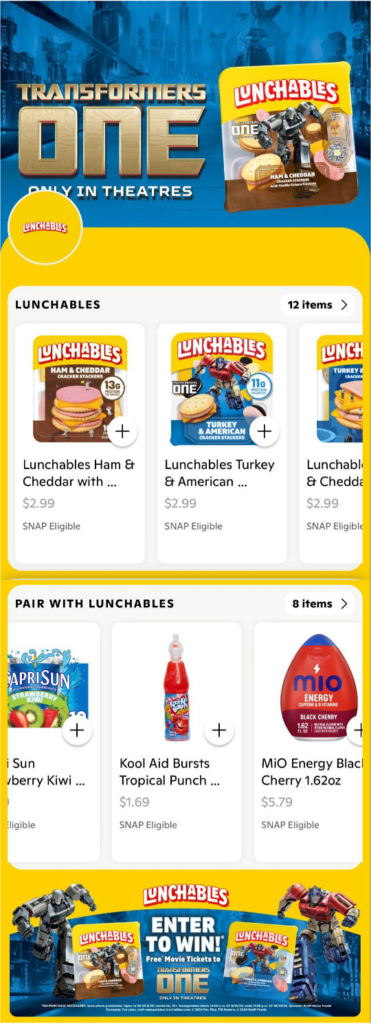 The on-demand delivery company introduced immersive experiences to its brand shops that can be launched within 72 hours. Since Gopuff is an app-driven business, it has developed these experiences to be mobile-first.
The on-demand delivery company introduced immersive experiences to its brand shops that can be launched within 72 hours. Since Gopuff is an app-driven business, it has developed these experiences to be mobile-first.
In our first example from Oscar Mayer Lunchables, the brand’s partnership with the Transformers One film release last summer comes through loud and clear, including a callout for a sweepstakes at the bottom of the page. And while Lunchables is the main focus, Kraft Heinz seized a basket-building opportunity by also including some drink options for parents to consider when thinking about their kids’ lunch needs.
Our other two examples illustrate ways of leveraging Gopuff’s video capabilities. Black Forest introduced new juicier fruit snacks with video that used movement to bring the innovation to life. And Gatorade tapped video to connect its national media campaign to the digital shelf.
And since we mentioned DTC partnerships at Amazon, it’s only fair to do it here, too. Gopuff is offering white-label delivery service for brands with storefronts on the Shopify ecommerce platform. When you visit Olly.com, for example, a window pops up offering home delivery in as little as 30 minutes, powered by Gopuff.
Walmart
Walmart unveiled several Brand Shop updates last fall. Video is now a content option here, too. Similar to the Gopuff examples, we found Crest using TV spot-style brand content and Eckrich looking to bring its meat products to life by presenting usage occasions. In addition to video, Walmart added three new modules with add-to-cart functionality to the Brand Shop Builder, further elevating the shopping experience on these pages.
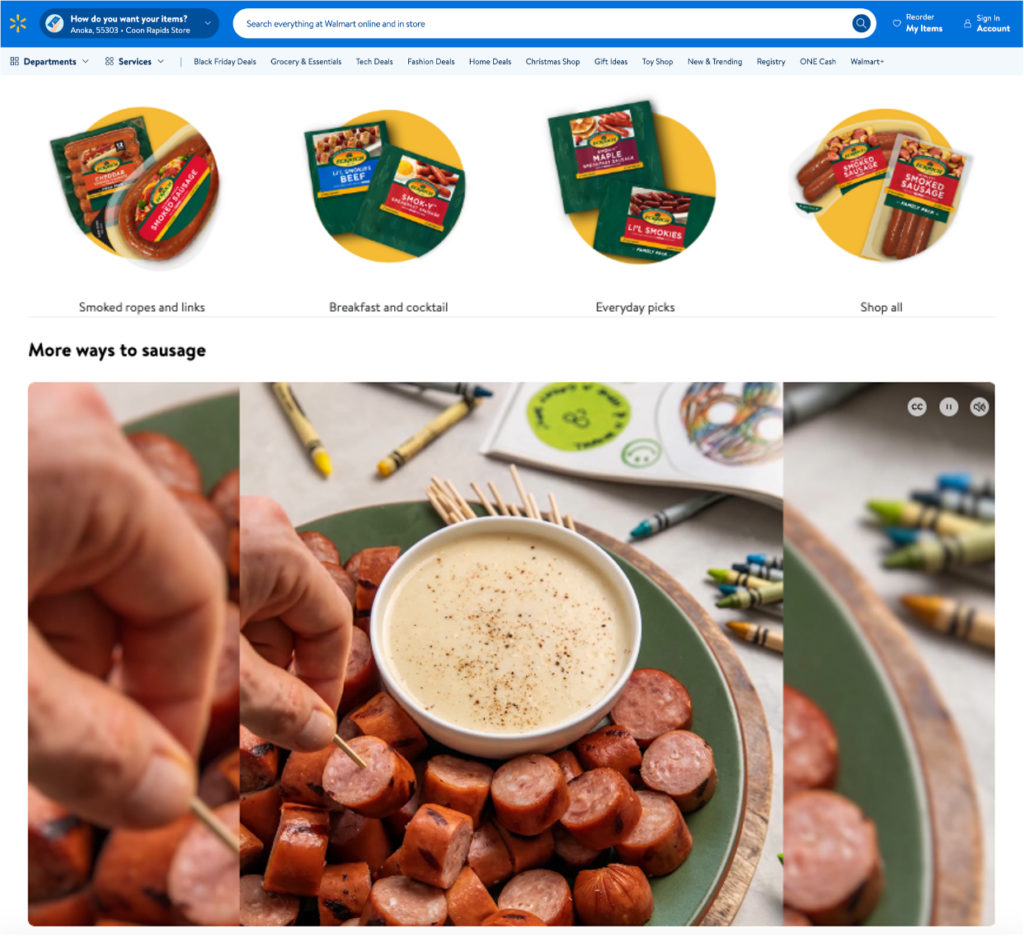
If you do business on Walmart.com and you don’t have a Brand Shop, we highly recommend investigating this option. These Brand Shops can be found organically by shoppers through links in the byline of your PDPs and don’t require a media campaign to drive traffic. Beyond helping to strengthen the relationship with your Walmart team, a Brand Shop is important to remain competitive with other brands who’ve already launched them.
One final update at Walmart that has us excited is the ability to showcase multiple brands within a single Brand Shop, which is great for marketers who have large portfolios or partnerships to promote. This, too, is something to consider as you build out your 2025 plans.
The information provided in the Digital Shelf Report only scratches the surface of the ecommerce guidance Mars United delivers to our clients. Optimizing the digital shelf demands a blend of art and science in which brands must appeal to shopper preferences while simultaneously adhering to the retailer’s content criteria — using a mixture of deep shopper insights, extensive retailer intelligence, and ecommerce expertise for which Mars United is uniquely suited to provide. If you’d like to learn more, contact Emily Baynard, VP-Ecommerce, at baynarde@marsunited.com.
About the Author

As VP-Ecommerce, Emily Baynard oversees Mars United’s digital shelf practice and is lead author of the Digital Shelf Report. A strategic, solutions-focused leader, she works closely with clients to develop omnichannel campaigns that connect brands with shoppers. She has more than 15 years of experience that span merchandising and category marketing roles at Target and shopper marketing at Coca-Cola, giving her a deep understanding of the role each stakeholder plays in meeting the demands of a successful project.

